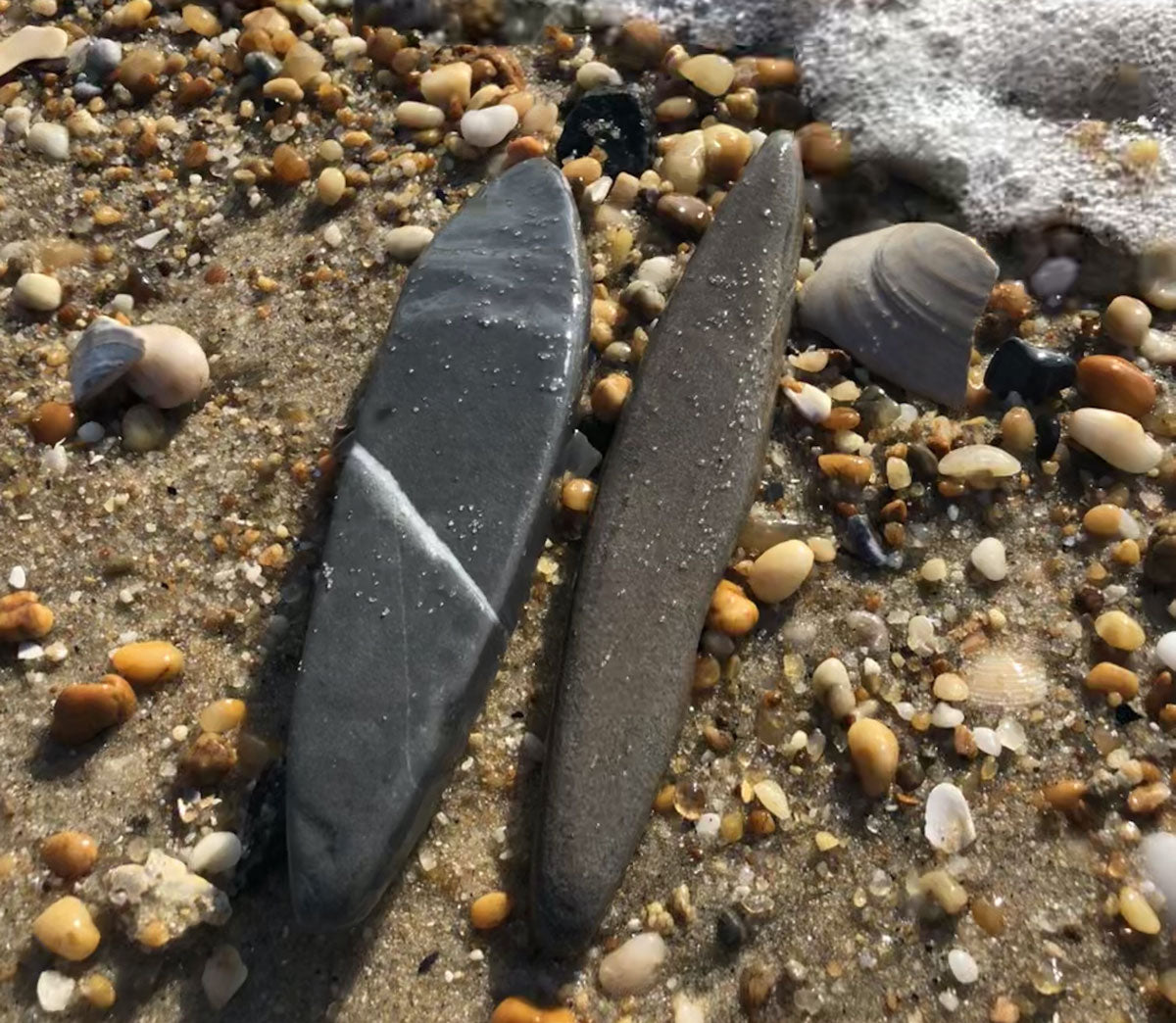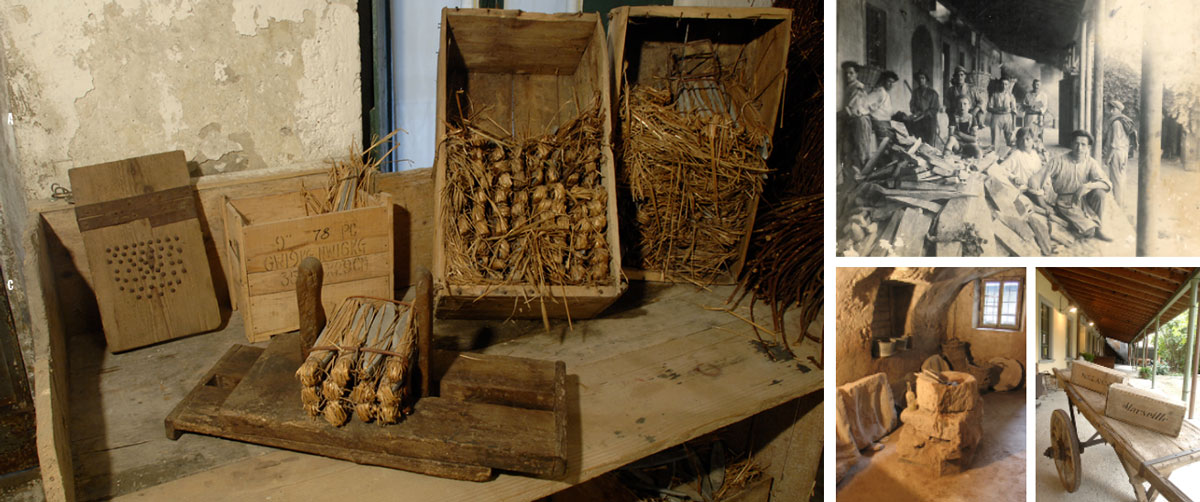Wipeout on the Jersey Shore
By Kirsti Scott

After Hurricane Sandy in October 2013, Jodie Greene went to the beaches of Mantoloking and Bay Head, New Jersey, almost every day to beachcomb. “Not being a rock collector, I usually wouldn’t pick up rocks, but one morning on the beach in Bay Head I found a really unique surfboard-shaped rock,” says Jodie. “I took it home and didn’t really think much of it.”
At the time, locals were helping members of the community gut their hurricane-damaged homes in preparation for rebuilding. While she was helping a family in Mantoloking with their beach home, Jodie told the homeowner (herself a beachcomber) about the strange surfboard stone she had found on the beach a few weeks prior. “She knew exactly what I was talking about and told me that the locals called them Mantoloking Stones or Mantoloking Whetstones,” Jodie says. “She described them perfectly and told me about an online video (youtu.be/OvlkJC706AI). Once I watched it, I knew for sure what I had found.”

The Mantoloking Stones have been found on the beaches of New Jersey for around 80 years, and until recently, there was much debate on their origins. Some believed them to be sharpening tools used in colonial times. Other theories were that they were remnants of a shipwreck, or that they were previously buried long ago and recently uncovered by shifting sands. Some theories even posited they were not man-made at all, but some sort of natural phenomenon.
After Super Storm Sandy, beachcombers Debbie Kasyan, Michele Lane, and Denise Wirth also began finding the stones in Mantoloking, and as far south as Ortley Beach, ten miles away. “I would find them after a strong Nor’easter or coastal storm,” Denise says. “I found some on the very high tide line, but I also pluck them out of the water at low tide.”

Since 1940, over 500 of these nearly identical Mantoloking Stones have been found on the barrier beach of Mantoloking, New Jersey. These stones are interestingly composed of one of two different source rocks. One is limestone with remnants of siliceous microfossil remains, including sponge spicules from the Jurassic Age. The other is limestone with abundant angular quartz grains from the Cretaceous Age.
In a study by renowned geologist Lincoln Hollister and his student John Vermylen (with immense help from passionate Mantoloking locals Jane Lindenmayer and Jenny Buck), these stones were found to have stranger origins than expected. The team suspected that they were whetstones used to sharpen scythes. After a failed extensive search for records of evidence of North American whetstone manufacturing, Vermylen and Hollister decided to expand their search worldwide. Amazingly, the spicule-rich and quartz-rich limestones in the Mantoloking Stones were identical to those made by a producer of whetstones in the town of Pradalunga, in Northern Italy: The Ligato Fratelli Company (ligatofratelli.com).
Vermylen and Hollister concluded that the stones found on the Jersey shore are most likely (though there is no way to be absolutely certain) lost cargo from an offshore wreck a bit before 1940.
Since her initial discovery, Jodie has found about twenty Mantoloking Stones in Mantoloking and Bay Head, New Jersey, though she likes to say, “they found me.” She has given most of them away, but she still says the remaining are some of her most prized beach finds.
“I heard stories after Super Storm Sandy that several locals had collections that were lost to the sea when their homes were destroyed,” says Jodie. “I tried to give a few of mine to a man that I had heard lost his.” Though he was touched by the offer, he refused to accept. Jodie says she’s sure he missed the ones he found on the beach himself. And Jodie knows the feeling. “I am waiting for the day the sand is pulled out and these are once again exposed.”

Learn more about beach rocks:

Learn more about beach rocks including agates, Cape May diamonds, Yooperlites, fulgurite, puddingstone, and more. Articles ›
This article appeared in the Beachcombing Magazine November/December 2020 issue.






